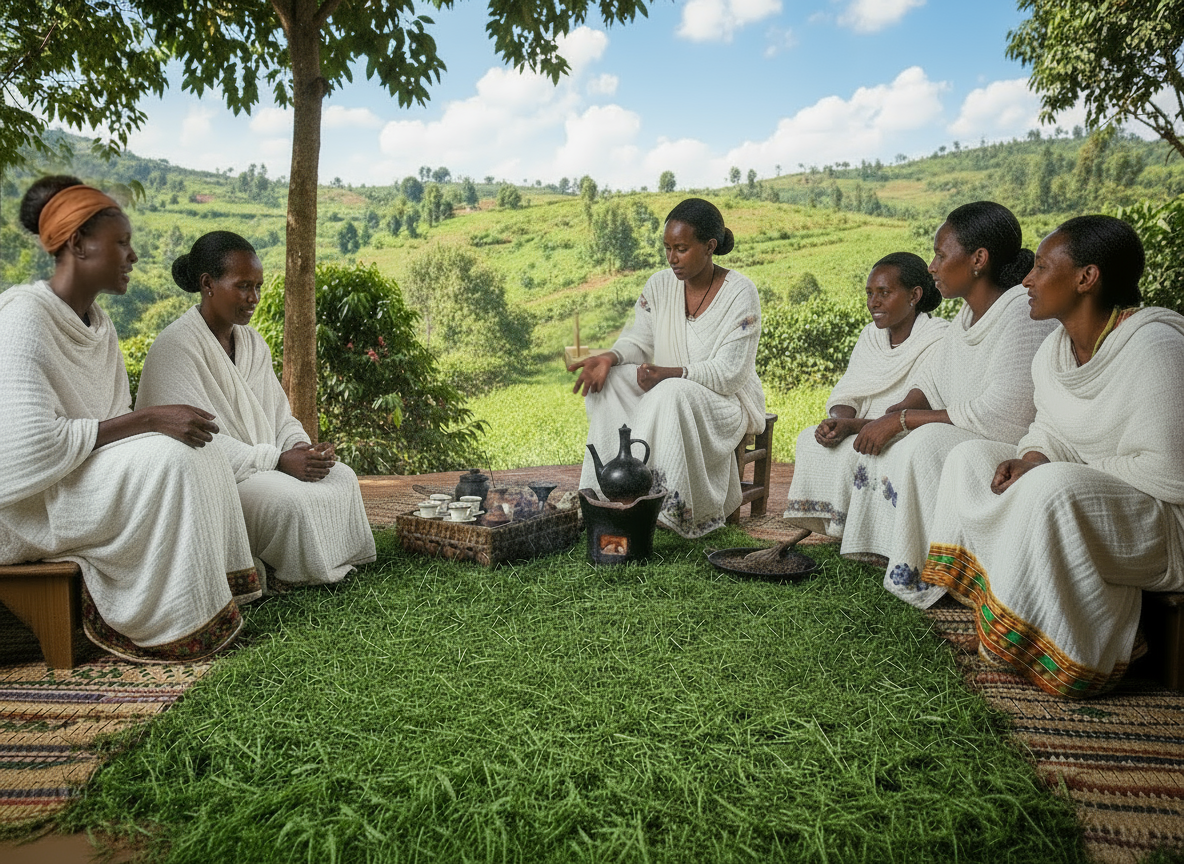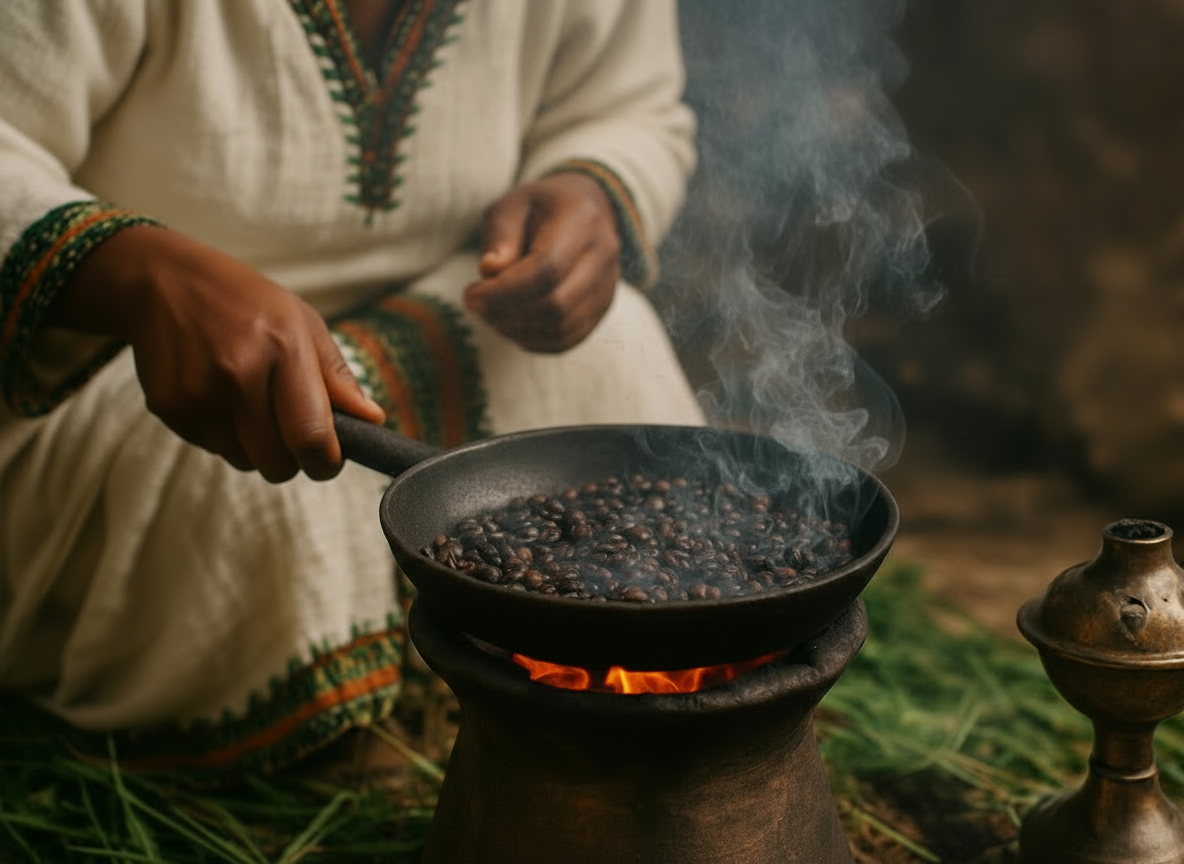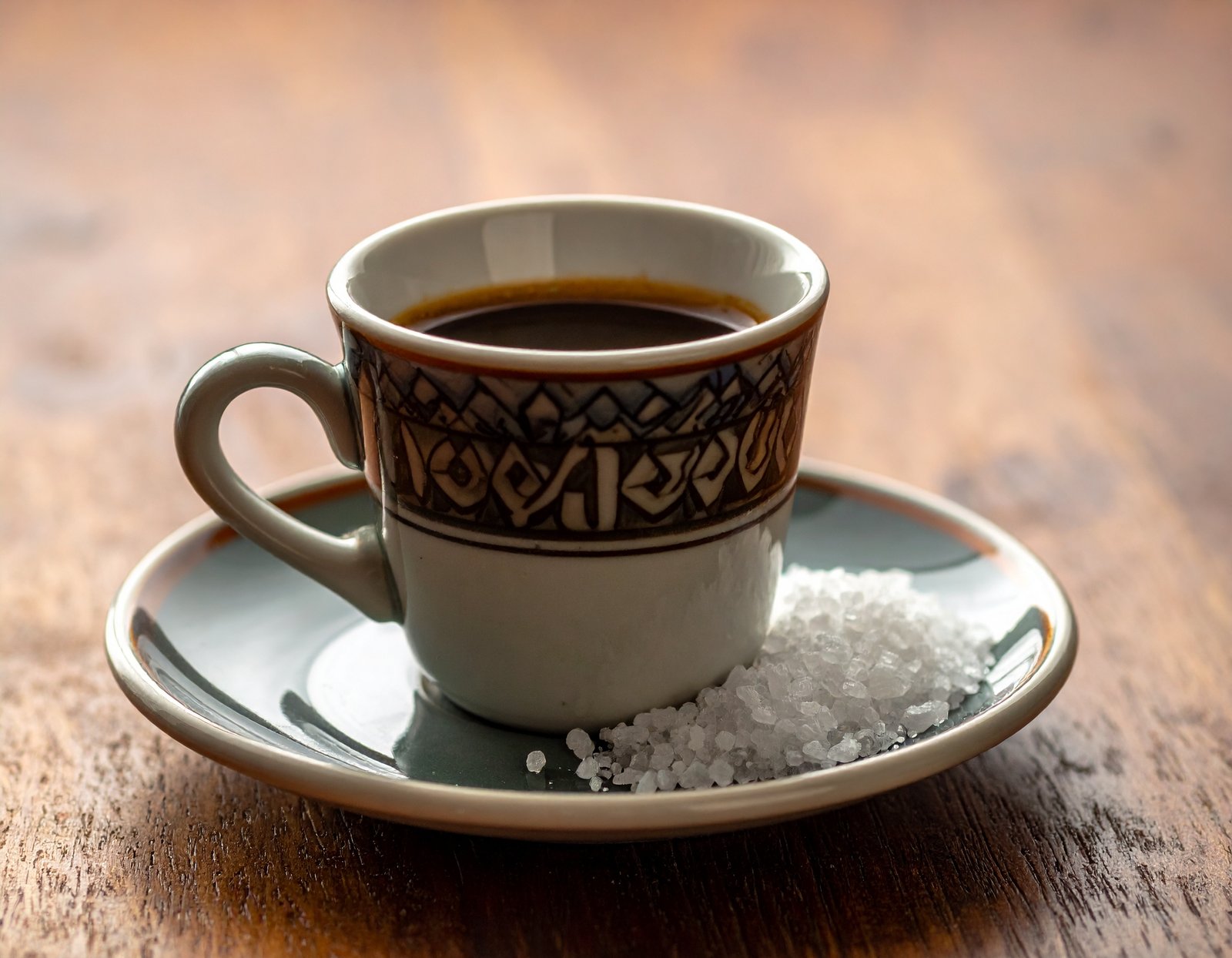The Art of Ethiopian Coffee: Traditional Brewing & Cultural Recipes
In Ethiopia, coffee is a daily performance — a ceremony of fire, fragrance, and friendship. To brew coffee here is to tell a story, to honor time, and to share a living piece of history passed from hand to hand.

From Beans to Ceremony
Every Ethiopian coffee ceremony begins with green coffee beans — unroasted, raw, and full of potential. The host, often the woman of the house, rinses the beans in a shallow pan and places them over a charcoal fire. Slowly, as she stirs, the fragrance rises — rich and nutty — drifting into the street to summon neighbors and passersby. Today, the same morning aroma inspires countless energy rituals — from the Ethiopian jebena to modern wellness cups enhanced with blends like Java Burn.
Guests gather. Often, fresh grass is spread on the floor, signaling welcome. Incense burns. The coffee, still roasting, becomes both drink and invitation. When the beans reach a deep brown, they are ground by hand using a mortar and pestle — the rhythmic pounding adding its own music to the gathering.
Ignite Focus & Metabolism
Blend Java Burn into your morning coffee to support metabolism, clarity, and smooth sustained energy — a modern echo of Ethiopia’s ancestral energy cup.
Explore Java BurnAffiliate link — thank you for supporting Health Intel Daily.

The Jebena: Ethiopia’s Clay Coffee Pot
The freshly ground coffee is poured into a round clay pot called a jebena. Its design — round base, long neck, narrow spout — is as symbolic as it is functional. The clay retains even heat, creating a soft, slow boil that coaxes flavor from the grounds without bitterness. Ethiopians often say coffee brewed in clay has life — it breathes through the vessel.
The jebena represents connection to the earth; it’s handmade, porous, and often passed down through generations. Using it is not just tradition but chemistry: clay neutralizes acidity and enhances mineral exchange, giving the drink its distinct depth and aroma.
Experience the Tradition: Download the Ancient Coffee Ritual Guide to learn the step-by-step Ethiopian brewing process and bring this timeless art into your home.
Get the Free GuideThe Three Rounds of Coffee
No Ethiopian ceremony ends with one cup. The host serves coffee three times: abol (first brew), tona (second), and bereka (third). Each round carries meaning — the first for awakening, the second for friendship, and the third for blessing.
If one cannot attend the first, they arrive for the second or third. What matters is presence. This repetition mirrors Ethiopia’s deep cultural rhythm — a respect for the number three found in art, language, and faith. Each round grows milder, symbolizing the softening of the day, the settling of the mind.

Timeless Regional Recipes
Across Ethiopia, each region adds its signature touch to coffee:
- Sidamo: Light roast, floral and citrusy, often brewed with a pinch of cardamom.
- Harar: Deep roast, winey and chocolatey, traditionally paired with dates or sweet bread.
- Jimma: Balanced body and earthiness — the quintessential “everyday” Ethiopian cup.
- Kafa (the birthplace): Naturally wild beans with complex tones of spice and fruit, often roasted softer to honor their forest origin.
Sometimes butter or salt is added for strength, echoing ancient highland recipes that treated coffee as sustenance as much as drink. In every cup lies a local dialect — a flavor that tells its own story.
Ancient Ethiopian Coffee Recipes That Endure
Coffee with Sea Salt — The Mineral Balance Cup
Long before refined sugar reached Ethiopia, coffee was not sweetened — it was balanced. In highland regions of Ethiopia, people added a pinch of sea salt to their brew. It wasn’t just taste — it was wisdom. Salt tempered coffee’s bitterness and replenished trace minerals the body lost through heat and exertion.
Today, science quietly agrees: coffee, while rich in antioxidants, can draw certain minerals from the body. The ancient custom of salting it was a natural correction — a way to return what the drink might take. The flavor is surprising — clean, deep, almost brothy. In the same spirit of balance, plant-based detox blends like Somaleaf build on that mineral wisdom — supporting gentle detox and calm focus with turmeric, ginger, and adaptogenic herbs.A few grains are enough to awaken the cup, grounding the sharp notes into something oceanic and calm.
To prepare: Brew Ethiopian coffee as usual. Before pouring, dissolve a pinch of unrefined sea salt in the cup. Sip slowly; notice how the salt rounds the edges of bitterness and heightens aroma.
Detox & Calm, Naturally
Somaleaf pairs ancient herbal wisdom with modern plant science — supporting gentle detox, reduced stress, and balanced energy that complements your daily coffee ritual.
Discover SomaleafAffiliate link — thank you for supporting Health Intel Daily.

Coffee with Clarified Butter — The Ancestral ‘Bulletproof’ Cup
Another ancient custom that survives to this day is coffee topped with a dash of melted butter, known locally simply as “coffee with butter” or “Buna be Qibbe.” Long before the world called it bulletproof, Ethiopians understood that butter (Qibbe) adds warmth, energy, and endurance. In the same spirit of balance, plant-based detox blends like Somaleaf build on that mineral wisdom — supporting gentle detox and calm focus with turmeric, ginger, and adaptogenic herbs.
Traditional pots even evolved with two spouts — one for pouring coffee, another to drizzle the golden butter in thin streams. The blend of caffeine and healthy fats created lasting focus and satiety, long prized by herders, travelers and the like.
Modern science reveals why: clarified butter contains butyric acid and short-chain fatty acids that nourish brain cells and support a steady metabolism. What began as necessity now stands as a timeless nootropic — an ancestral energy drink born of simplicity.
Java Burn carries forward the same principle — combining plant-based actives with your morning brew to ignite metabolism and mental clarity, echoing the balance our ancestors intuitively brewed.To prepare: Melt a teaspoon of clarified butter (or unsalted grass-fed butter). Pour freshly brewed coffee into a small cup, then swirl in the butter until a thin golden layer forms on top. The result: rich aroma, smooth texture, and focus that lingers for hours. Today, many readers enhance that ancestral cup with modern metabolism-support blends like Java Burn, a flavorless powder that refines coffee’s natural energy curve while supporting fat metabolism and clear focus.

Coffee as Connection
To drink coffee in Ethiopia is to take part in something older than memory. The ceremony’s pace — roasting, grinding, boiling, serving — draws people back to presence. The act of slowing down is itself a kind of medicine. Here, conversation flows like steam from the pot, and every sip carries gratitude, laughter, and peace. For those seeking that same calm connection in modern life, gentle herbal systems like Somaleaf complement coffee rituals with adaptogens that soothe stress and support the body’s natural cleansing rhythm.
It’s a ritual that reminds us that energy is meant to be shared. Even modern science echoes this truth: dopamine, oxytocin, and serotonin — the very chemicals of connection — rise when we drink together, not alone.
Ignite Focus & Metabolism
Blend Java Burn into your morning coffee to support metabolism, clarity, and smooth sustained energy — a modern echo of Ethiopia’s ancestral energy cup.
Explore Java BurnAffiliate link — thank you for supporting Health Intel Daily.
Keeping the Tradition Alive
Though coffeehouses and machines have taken over much of the modern world, in Ethiopia the ceremony continues daily — three times a day in many homes. It isn’t performance, but practice. It keeps neighbors close, bridges generations, and ensures that every roast carries warmth beyond caffeine. Even as new wellness blends like Somaleaf revive plant-based healing, Ethiopia’s ceremony reminds us that real energy begins in balance — not in haste.
To brew coffee this way is to preserve identity. To drink it this way is to taste continuity — one unbroken story of people, patience, and aroma.
Keep Exploring: Get your free Ancient Coffee Ritual Guide and learn how to prepare coffee with purpose and tradition — just as it’s been done for centuries.
Download the Free GuidePrevious: The Medicinal Elements of Coffee — Natural Chemistry of Energy